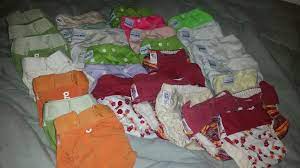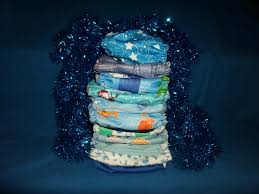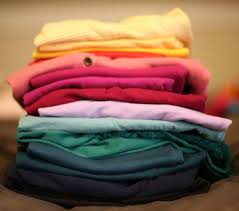Diapering is one of the most essential tasks new parents must undertake. In the past, cloth diapering was the only option available to parents. However, with the invention of disposable diapers, cloth diapering became less popular. However, in recent years, cloth diapering has made a comeback in a more modernized and convenient form.
Many new parents may need an updated perception of cloth diapering. They may imagine large cotton sheets with scary pins and confusing latches to keep the fabric in place, similar to how their grandmothers remember it. However, cloth diapers have come a long way in the last 10-20 years.
Cloth diapers are more economical and can be reused for multiple children, eliminating the need for frequent diaper purchases. They are also more environmentally friendly, as they are made from natural fibers and don’t contain any harmful chemicals. Although cloth diapering has its benefits, it also has some drawbacks.
If you’re a new parent wondering whether to use cloth or disposable diapers, this blog post will highlight the pros and cons of both diapers to help you make an informed decision.
Are cloth diapers better?

A cloth diaper is a reusable diaper made of cotton, fleece, or other fabric. They are easy to use and come in many shapes and sizes. All cloth diapers have two components: an absorbent inner layer and a waterproof cover or outer layer. The difference lies in how these layers are built. Some absorbent inserts are removable, while others are built-in. You can learn more about the different types of cloth diapers here.
Cloth diapering has become more convenient and more accessible to master in recent years. Choosing cloth diapers over disposables can reduce waste. Although the learning curve for cloth diapers may be slight, it eliminates the worry about keeping yourself stocked with monthly or weekly diaper purchases. However, you must purchase enough diapers to make it through each day without constantly running your laundry machine. For newborns, this means having at least 24 cloth diapers on hand if you exclusively use cloth and wash every other day.
When it comes to the cost of cloth diapers versus disposable, while you may spend more upfront on cloth diapers, consistent use can lead to considerable savings in the long run. You can save up to $1,500-$2,000 per child. Although your energy and water bills may increase with additional cloth diaper washes, the uptick in laundry would likely happen with or without cloth diapers. You can save on energy costs by washing at lower temperatures and hanging diapers outside to dry in the sun instead of using a dryer. This can extend the life of your cloth diapers and decrease your environmental footprint.
Another thing to consider when considering the cost is that cloth diapers can be passed down to future siblings or sold to other parents after your baby outgrows them. According to some studies, cloth-diapered babies might potty-train faster than babies in disposables.
Pros:
Cost Savings: Despite the initial expense, cloth diapers save money in the long run, especially when reused for multiple children.
Environmentally Friendly: Cloth diapers reduce landfill waste significantly compared to disposable diapers. One-size options are available, usable from newborns through potty training, reducing trash output.
Soft and Gentle Fabrics: Made of soft materials, including organic options, ensuring comfort and safety for a baby’s delicate skin.A wide variety of designs and colors are available in diaper covers.
Cost Comparison: Consumer reports suggest a significant cost disparity between disposable and reusable diapers, with cloth diapers costing substantially less over a child’s diapering period.
Easy Cleanup: Options like biodegradable able liners help contain waste, simplifying cleanup. Sprayers and shields aid in managing solid waste before washing, streamlining the process.
Generational Use: Cloth diapers can be saved for future siblings, sold, or given to others in need, maximizing cost-effectiveness.
Better for Baby’s Skin:
 Switching to cloth diapers often reduces diaper rash, as they’re as absorbent as disposables and free from chemicals.
Switching to cloth diapers often reduces diaper rash, as they’re as absorbent as disposables and free from chemicals.
cons
Washing Requirements: Cloth diapers must be washed soiled, especially after a baby consumes solid food. The process can be challenging for those uncomfortable with toileting duties. Products like Bio-Liners or diaper sprayers can assist but may only partially eliminate the task.
Increased Laundry Load: Cloth diapers necessitate additional laundry, typically washed separately from other clothes, leading to higher water usage and potentially increased water bills.
Absorbency Challenges: Cloth diapers might match a different absorbency level than disposables, despite efforts using inserts or other systems. Modern disposables are continuously improved for better absorbency and leakage prevention.
Laundry Frequency and Quantity:

The number of cloth diapers owned impacts laundry frequency. Fewer diapers mean more frequent washing, while an enormous stash reduces laundry frequency but may require a significant initial investment.
Upfront Investment: Cloth diapers often require a substantial initial investment per diaper, unlike buying a pack of disposables for a comparable price. However, unlike disposable ones, they can be reused for an extended period.
Daycare Limitations: Not all daycares or childcare providers accept cloth diapers, posing a challenge for parents who prefer using cloth. This limitation might force parents to switch between cloth and disposable diapers based on daycare policies.
Are disposable diapers better?
Diapering your baby is challenging, and choosing the right type of diaper can be tricky. One of the options available is disposable diapers, which is the easiest choice due to their convenience factor. They require little to no learning curve and make cleanup incredibly easy by allowing you to throw away soiled diapers.
However, this convenience comes with a significant environmental impact. Using disposable diapers, you could add hundreds and even thousands of diapers to the landfill each month, which can be an essential concern if you want to reduce your waste output.
Disposable diapers are known for absorbing large amounts of liquids, which helps keep your baby feeling dry. They usually come in different sizes and are generally easy to fit. However, they offer more customization than some cloth diapers, which can be a disadvantage if your baby has specific needs.
While the cost per diaper is relatively low and requires minimal upfront investment, the cost of disposable diapers increases over time. You’ll need to purchase diapers regularly, and the cost of doing so can be significant, especially if you’re on a tight budget. Additionally, some babies may develop rashes or skin irritation from using disposable diapers, which can be a concern for some parents.
Pros of disposable diapers
Super Convenient: Easy to use with no preparation needed, offering hassle-free diaper changes and no cleanup. Simply toss them away after use.
On-The-Go Usage: Ideal for travel or outings as they can be disposed of anywhere, eliminating the need to carry soiled diapers back home.
Highly Absorbent: Known for their superior absorbency, reducing the frequency of diaper changes due to their ability to keep wetness away from the skin.
Readily Available: Easily accessible in various stores, online, airports, and drugstores, making them convenient to purchase and use in emergencies or quick changes.
Widely Accepted by Caregivers: Accepted and used by daycare facilities and babysitters, ensuring a convenient option for childcare needs outside the home.
Less Upfront Cost: Initially more affordable than cloth diapers, making them accessible to families with budget constraints.
Wide Range of Sizes and Styles: Available in multiple sizes and styles catering to babies’ needs at various stages of growth.
Leak Protection: When used appropriately and changed within suitable time frames, they offer reliable protection against leaks.
Time-Saving: Require no additional time investment; they can be purchased online and delivered to the doorstep, saving time for busy parents.
Convenience and Accessibility: They are widely available, requiring no washing or recycling, providing convenience and ease of access in almost any store.
Eco-Friendly Options Available (at a Cost): Some eco-friendly disposable diaper options made from sustainable, biodegradable materials are available, though they may be pricier.
Cons of disposable diapers
Environmental Impact: They are not eco-friendly; they don’t biodegrade quickly and contribute significantly to landfills, taking hundreds of years to decompose.
Manufacturing, packaging, and transportation to consumers also harm the environment, contributing to landfill waste.
Certainly! Here’s the provided data on Disposable Diapers in Municipal Solid Waste (MSW) by Weight (in thousands of U.S. tons) from 1960 to 2018 in a table format:
| Management Pathway | 1960 | 1970 | 1980 | 1990 | 2000 | 2005 | 2010 | 2015 | 2017 | 2018 |
|---|---|---|---|---|---|---|---|---|---|---|
| Generation | – | 350 | 1,930 | 2,700 | 3,230 | 3,410 | 3,700 | 4,170 | 4,150 | 4,100 |
| Recycled | – | – | – | – | – | – | – | – | – | – |
| Composted | – | – | – | – | – | – | – | – | – | – |
| Combustion with Energy Recovery | – | – | 30 | 460 | 630 | 620 | 650 | 810 | 810 | 800 |
| Landfilled | – | 350 | 1,900 | 2,240 | 2,600 | 2,790 | 3,050 | 3,360 | 3,340 | 3,30 |
Health Risks for Waste Handlers: Baby waste in disposable diapers can contain harmful bacteria and viruses, posing health risks for garbage handlers and environmental pollution.
Long-Term Cost: Despite lower upfront costs, disposable diapers become more expensive in the long run, with a monthly expense of $60-$80, totaling $1,800-$2,400 over 2.5 years, compared to the one-time cost of cloth diapers ($300-$500).
Chemical Exposure: Contain chemicals like dyes, chlorine, phthalates, fragrances, and absorbent gels, which might cause skin irritation, allergies, or diaper rash in babies.
Diaper Rash and Skin Irritation: Disposable diapers might cause diaper rash or skin irritation due to chemicals and lack of breathability, requiring additional care and treatment.
Lack of Customization disposable diapers: Not as customizable as cloth diapers, potentially leading to discomfort or leaks if the fit isn’t perfect for the baby’s size.
Delayed Potty Training: High absorbency can make it difficult for babies to feel discomfort or wetness, possibly delaying potty training as they may not associate urination with pain.
Environmental Impact (Quantity): Over 20 billion disposable diapers are in landfills yearly, creating a significant environmental burden.
Chemicals and Fragrances: Some disposable diapers contain chemicals and fragrances that might cause allergic reactions or skin irritations in babies.
High Cost Over Time: The average cost of a disposable diaper in the USA is around 29 cents, accumulating a substantial financial burden over a child’s early years.
Supply Chain Issues: Vulnerability to supply chain disruptions, as seen during the pandemic, may lead to shortages, prompting families to seek alternative diapering solutions.
Cloth diapers vs disposable comparison chart
| Aspect | Cloth Diapers | Disposable Diapers |
|---|---|---|
| Cost | Ranges from $300-$600 per child over 2 years | Average cost is $2,000-$3,000 per child over 2 years |
| Ease of Use | May have a small learning curve, need laundering | Super convenient, little learning curve, disposable |
| Environmental Impact | Reduce landfill waste, may increase water/energy use | Increase landfill waste, require raw material production |
| Skin Health | Fabrics touch baby’s skin | Disposable materials touch baby’s skin |
| Fit | One-size adjustable diapers available | Various sizes needed for growing babies |
| Leakage Protection | Leg and waist elastics for containment | Reliance on absorbent core, some with stretchy cuffs |
What are the Benefits of cloth diapers?
More Breathability: Cloth diapers, typically made from cotton, offer better breathability, reducing skin irritation and minimizing the likelihood of rashes in babies.
Aid in Earlier Potty Training: Some parents find that using cloth diapers can lead to earlier infant potty training than disposable diapers.
Cost Savings: Cloth diapers are a cost-effective option in the long run. Despite the initial investment, they save money as they can be reused multiple times, cutting down on continuous purchases.
Reduced Waste Production: Cloth diapers significantly reduce waste production compared to disposable diapers, contributing positively to the environment by reducing landfill waste.
Convenience: While it might seem surprising, cloth diapers offer comfort. Despite the need for washing, many find them convenient due to factors like reduced incidents of leaks and potential ease in establishing a routine for diaper changes. Read More on Benefits of cloth diapers.
FAQs
Are cloth diapers healthier?
Yes, cloth diapers made from natural materials like cotton or hemp are considered healthier for babies. They allow better air circulation, keeping the baby’s skin dry and reducing the likelihood of diaper rash. In contrast, disposable diapers trap moisture against the skin, leading to skin irritation and diaper rash.
Are cloth diapers better for the environment?
Cloth diapers use more water than disposables during washing, but they provide more opportunities to reduce overall environmental impact. By using efficient washing machines, cleaner soaps, and sustainable power sources, cloth diapers can be more environmentally friendly than disposables in the long run.
Do cloth diapers affect walking?
Yes, cloth diapers might have an impact on infants’ walking. For instance, a cloth diaper’s bulkiness could delay or affect the development of walking skills by making it more challenging for babies to walk as they would without a diaper. Similarly, the fit and bulkiness of disposable diapers affect infants’ walking experience by altering their step width.
Are cloth diapers cheaper?
Despite a higher initial cost, consistent use of cloth diapers proves far more cost-effective than disposables. The upfront investment pays off significantly, saving $1,500-$2,000 per child throughout their diapering journey. These diapers can be reused extensively, so the savings escalate, mainly if used for subsequent children.
Are cloth diapers better for your baby?
Cloth diapers typically lack unnecessary chemicals, dyes, or fragrances, offering a gentler experience for your baby’s skin. Their construction with soft fabrics often reduces the likelihood of diaper rashes. Additionally, the need for more frequent changes might aid in preventing skin irritation.
Do cloth diapers help make potty training easier?
While opinions vary, certain studies suggest that cloth diaper usage might assist in potty training by helping children recognize the sensation of wetness, potentially aiding in establishing cues for potty readiness.
Final thoughts on What are the Pros and Cons of Cloth Diapering?
Choosing between cloth and disposable diapers depends on your lifestyle and priorities. Cloth diapers are clean and eco-friendly, while disposable ones are more convenient. You can also use a hybrid approach, using cloth diapers part-time. Ultimately, selecting what works best for you and your baby is essential, considering factors like ease of use, cost, and convenience.
Also read

